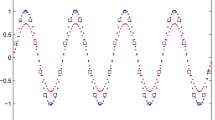Abstract
FIG. 1 is an ordinary “Bordered” square consisting of a “Heart” (in the associated position, the three rows, three columns and two diagonals of which sum to 39) and a “Border” formed of complementary numbers (25.1, 24.2, 23.3, etc.). There are 26 such “Hearts” and 605 “Borders”, and, including inversions of the “Borders” and reversions of the “Hearts”, there are 174,240 squares of this type with one inversion that has a similar number. These “Hearts” can be in 21 positions in a square of fifth order, and altogether with these “Hearts” in all their positions, I have calculated that there are more than 649,000 squares of fifth order of this type of “Heart”.
This is a preview of subscription content, access via your institution
Access options
Subscribe to this journal
Receive 51 print issues and online access
$199.00 per year
only $3.90 per issue
Buy this article
- Purchase on Springer Link
- Instant access to full article PDF
Prices may be subject to local taxes which are calculated during checkout
Similar content being viewed by others
Author information
Authors and Affiliations
Rights and permissions
About this article
Cite this article
BURNETT, J. “Bordered” Squares of Fifth Order and their Magic Derivatives. Nature 116, 573–574 (1925). https://doi.org/10.1038/116573b0
Issue Date:
DOI: https://doi.org/10.1038/116573b0
Comments
By submitting a comment you agree to abide by our Terms and Community Guidelines. If you find something abusive or that does not comply with our terms or guidelines please flag it as inappropriate.



